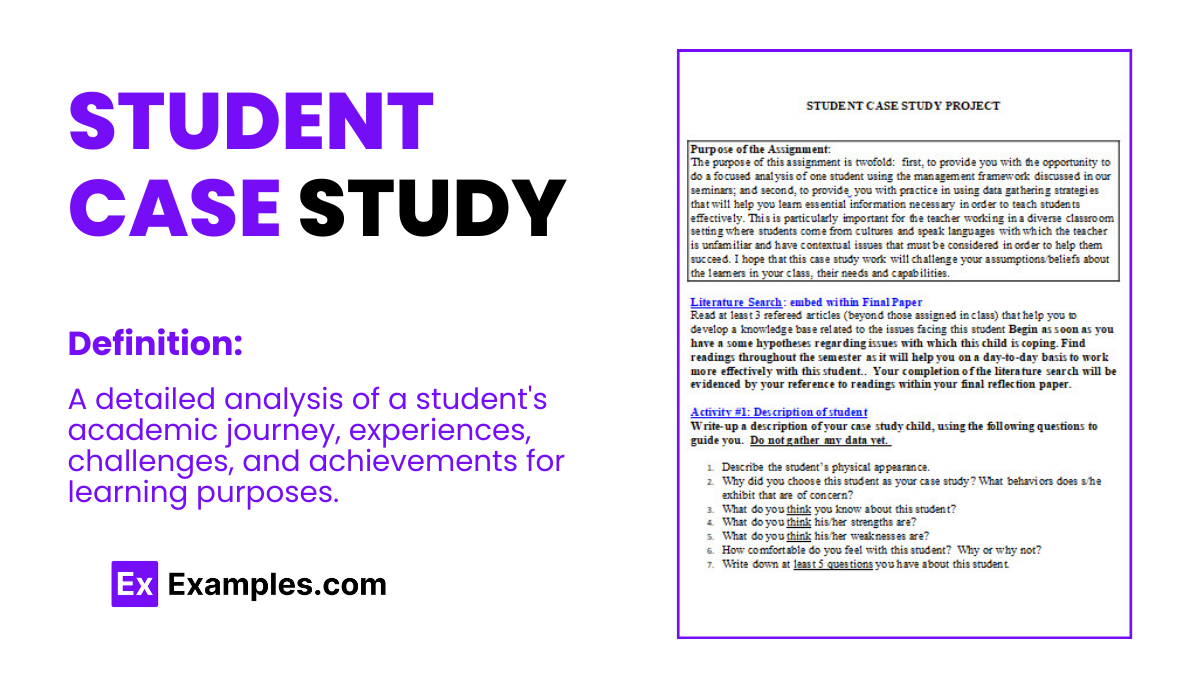

Delving into student case studies offers invaluable insights into educational methodologies and student behaviors. This guide, complete with detailed case study examples, is designed to help educators, researchers, and students understand the nuances of creating and analyzing case studies in an educational context. By exploring various case study examples, you will gain the tools and knowledge necessary to effectively interpret and apply these studies, enhancing both teaching and learning experiences in diverse academic settings.
A student case study is an in-depth analysis of a student or a group of students to understand various educational, psychological, or social aspects. It involves collecting detailed information through observations, interviews, and reviewing records, to form a comprehensive picture. The goal of a case study analysis is to unravel the complexities of real-life situations that students encounter, making it a valuable tool in educational research. In a case study summary, key findings are presented, often leading to actionable insights. Educators and researchers use these studies to develop strategies for improving learning environments. Additionally, a case study essay allows students to demonstrate their understanding by discussing the analysis and implications of the case study, fostering critical thinking and analytical skills.

Schools especially those that offers degree in medicine, law, public policy and public health teaches students to learn how to conduct a case study. Some students say they love case studies. For what reason? Case studies offer real world challenges. They help in preparing the students how to deal with their future careers. They are considered to be the vehicle for theories and concepts that enables you to be good at giving detailed discussions and even debates. Case studies are useful not just in the field of education, but also in adhering to the arising issues in business, politics and other organizations.
Overcoming Reading Challenges: A Case Study of Emily Clark, Grade 3
Prepared by: Laura Simmons, Special Education Teacher
Sunset Elementary School
Date: May 12, 2024Emily Clark, an 8-year-old student in the third grade at Sunset Elementary School, has been facing significant challenges with reading and comprehension since the first grade. Known for her enthusiasm and creativity, Emily’s struggles with reading tasks have been persistent and noticeable. The primary purpose of this case study is to analyze Emily’s reading difficulties, implement targeted interventions, and assess their effectiveness.
Emily exhibits difficulty in decoding words, reading fluently, and understanding text, as observed by her teachers since first grade. Her reluctance to read aloud and frustration with reading tasks have been consistently noted. Assessments indicate that her reading level is significantly below the expected standard for her grade. Parental feedback has also highlighted Emily’s struggles with reading-related homework.
Analysis of Emily’s situation suggests a potential learning disability in reading, possibly dyslexia. This is evidenced by her consistent difficulty with word recognition and comprehension. These challenges have impacted not only her reading skills but also her confidence and participation in class activities, especially those involving reading.
To address these challenges, an individualized education plan (IEP) was developed. This included specialized reading instruction focusing on phonemic awareness and decoding skills, multisensory learning approaches, and regular sessions with a reading specialist. Over a period of six months, Emily demonstrated significant improvements. She engaged more confidently in reading activities, and her reading assessment scores showed notable progress.
In conclusion, the intervention strategies implemented for Emily have been effective. Her case highlights the importance of early identification and the implementation of tailored educational strategies for students with similar challenges. It is recommended that Emily continues to receive specialized instruction and regular monitoring. Adjustments to her IEP should be made as necessary to ensure ongoing progress. Additionally, fostering a positive reading environment at home is also recommended.